-
Coup attempt raises fresh questions about safety of U.S. nuclear stockpile in Turkey
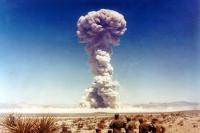
To the extent that news coverage of the coup attempt in Turkey touched on how the coup might affect the U.S. military presence in the country, the focus was on air operations the United States has been conducting against ISIS from the Incirlik airbase in southern Turkey. What was not discussed in the media was the fact that the base is home to the largest stockpile of U.S. nuclear weapons in Europe. The coup was the cause of fresh questions about the safety of these weapons, and the wisdom of storing them in such a vulnerable location.
-
-
Laser uranium enrichment technology may create new nuclear proliferation risks
A new laser-based uranium enrichment technology is based on a new uranium separation concept, which relies on the selective laser excitation and condensation repression of uranium-235 in a gas. Experts worry that this new enrichment technology may provide a hard-to-detect pathway to nuclear weapons production.
-
-
New mobile app offers a virtual tour of the Manhattan Project
A new, free mobile application titled “Los Alamos: The Secret City of the Manhattan Project,” is now available for download from the Apple store. The app allows users from any location around the world to experience the environment in that pivotal time during the Second World War when a group of scientists came to Project Y, the wartime-era code name for Los Alamos, to develop a weapon unlike any other in human history — a weapon to harness the power of the atom.
-
-
“Cold War warriors”: Sandia’s decades in nuclear weapons
“Cold War Warriors,” a 32-minute historical documentary, traces nuclear weapons testing from the first nuclear detonation in southern New Mexico in 1945 to the final test in September 1992. The story is told largely by forty-four Sandia Lab field testers, the people video producer Myra Buteau calls “game changers in the evolution of nuclear weapons testing.”
-
-
What is a dirty bomb and how dangerous is it?
The worrying news that individuals affiliated with the so-called Islamic State have undertaken hostile surveillance at a Belgian nuclear research facility has created growing speculation about the group’s nuclear ambitions. There are no indications that a terrorist group has obtained any fissile material to date. An easier option for a terrorist group would be to build a dirty bomb or, technically, a radiological dispersal device. This is the reason for sensible concern, rather than hysterical speculation about Islamic State’s recent activities in Belgium and, especially, Iraq and Syria. After all, without an effective government, it is unclear who controls the many radioactive sources in the region.
-
-
African parliaments lead the continent's fight against weapons of mass destruction
Jihadist literature has, for a while, called for the acquisition of weapons of mass destruction — encouraging the production of ricin, botulinum, and sarin. The surge in terrorist acts and violent extremism on the continent should underscore, for all African states, the urgent need to actively prevent the proliferation of weapons of mass destruction to non-state actors. It also confirms the relevance of UN Security Council resolution 1540
-
-
ISIS planning to use drones for radioactive attacks on Western cities
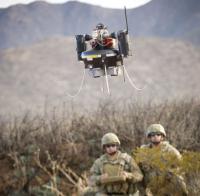
Prime Minister David Cameron warned that ISIS terrorists are planning to use drones to spray nuclear material over Western cities in a lethal “dirty bomb” attack. Security experts are worried about jihadists buying simple drones, which are widely available, and use them to carry radioactive material into the centers of large cities in attacks which would kill thousands and contaminate large sections of cities, making entire areas uninhabitable for years.
-
-
ISIS obtaining nuclear weapons “obviously a concern”: British defense secretary
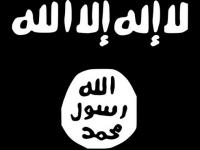
British defense secretary Michael Fallon said the prospect of ISIS or another terror group with the “technical know-how” obtaining nuclear weapons is “obviously a concern.” Fallon said it was important to ensure that terror groups could not “get their hands on nuclear weapons” and said the United Kingdom was doing its part by maintaining strict export controls on the necessary technology.
-
-
Helping inspectors locate and identify underground nuclear tests
Through experiments and computer models of gas releases, scientists have simulated signatures of gases from underground nuclear explosions (UNEs) that may be carried by winds far from the point of detonation. The work will help international inspectors locate and identify a clandestine UNE site within a 1,000 square kilometer search area during an on-site inspection that could be carried out under the Comprehensive Nuclear Test Ban Treaty.
-
-
Iran nuclear deal: how to ensure compliance?
The U.S. and European countries lifted nuclear-related sanctions against Iran on 16 January as part of a deal in which the country agreed to limit its nuclear activities and accept a new system of international inspections. The issue now is how the international community can be confident that Iran is not violating the deal. Iran agreed never to develop nuclear weapons when it signed the Nuclear Non-Proliferation Treaty in 1968. There’s no ironclad method to prevent Iran from breaking its promise and developing nuclear weapons, but this new agreement builds in a number of strong protections. In conjunction with U.S. and allied intelligence capabilities, these rules mean even a sophisticated and carefully executed secret plan would carry a high risk of detection.Looking at the deal as a whole, Iran’s best strategy for acquiring nuclear weapons would simply be to wait for restrictions on its declared enrichment program to be lifted. Assuming that the deal does not fall apart sooner, most of those provisions are scheduled to expire in 2030. In the meantime, the deal helps make a nuclear-armed Iran a less immediate prospect.
-
-
Software helps detect nuclear tests
When North Korea conducted its recent nuclear weapon test, it was not terribly difficult to detect. It was a fairly large blast, it occurred in a place where a test was not surprising, and the North Korean government made no effort to hide it. But clandestine tests of smaller devices, perhaps by terrorist organizations or other nonstate actors, are a different story. It is those difficult-to-detect events that the Vertically Integrated Seismic Analysis (VISA) — a machine learning system — aims to find.
-
-
Seismologists "hear" the nuclear explosions in North Korea
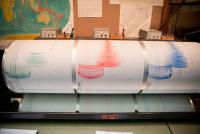
International experts are far from convinced that North Korea actually conducted its first H-bomb test, which was reported by the country last week.Seismology alone cannot tell whether it was a hydrogen bomb or not, but seismologists say that what emerges from the existing data is that last week’s seismic events in North Korea were slightly smaller than a similar event in 2013.
-
-
North Korea claims to have tested miniaturized hydrogen bomb
North Korea has conducted its fourth nuclear test in ten years – the previous tests took place in 2006, 2009 and 2013 – indicating that the country is further along in developing nuclear warheads which could be miniaturized and placed on a missile capable of reaching the U.S. mainland.
-
-
NSA kept Benjamin Netanyahu under surveillance during Iran negotiations
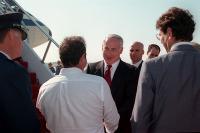
As part of the effort by the Obama administration earlier this year to make sure that the negotiations between the P5+1 powers and Iran over the latter’s nuclear program would not be derailed or obstructed, the National Security Agency (NSA) kept a close watch on Israel’s prime minister Benjamin Netanyahu. The agency collected intelligence on Netanyahu and other Israeli leaders in an attempt to learn what moves the Israeli leader was planning as part of his campaign to have Congress reject the agreement the United States was negotiating.
-
-
Iran ships enriched uranium to Russia as part of nuclear deal
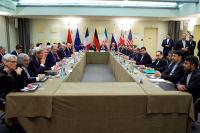
On Monday Iran took the most important step so far toward complying with the nuclear agreement it had signed with the P5+1 power by shipping 25,000lb of low-enriched uranium to Russia. Iran had until the end of 2015 to ship out all of its low-enriched uranium it has stockpiled – except 660lb which the agreements allows it to keep.
-
- All
- Regional
- Water
- Biometrics
- Borders/Immig
- Business
- Cybersecurity
- Detection
- Disasters
- Government
- Infrastructure
- International
- Public health
- Public Safety
- Communication interoperabillity
- Emergency services
- Emergency medical services
- Fire
- First response
- IEDs
- Law Enforcement
- Law Enforcement Technology
- Military technology
- Nonlethal weapons
- Nuclear weapons
- Personal protection equipment
- Police
- Notification /alert systems
- Situational awareness
- Weapons systems
- Sci-Tech
- Sector Reports
- Surveillance
- Transportation
Advertising & Marketing: advertise@newswirepubs.com
Editorial: editor@newswirepubs.com
General: info@newswirepubs.com
2010-2011 © News Wire Publications, LLC News Wire Publications, LLC
220 Old Country Road | Suite 200 | Mineola | New York | 11501
Permissions and Policies
Editorial: editor@newswirepubs.com
General: info@newswirepubs.com
2010-2011 © News Wire Publications, LLC News Wire Publications, LLC
220 Old Country Road | Suite 200 | Mineola | New York | 11501
Permissions and Policies
